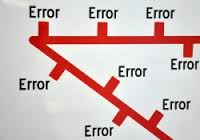Introduction
As equipment and processes have become more complex so too has the work of maintainers and operators become more complicated thereby increasing the need for written procedures. Sound management practices encourage written procedures and most regulations now demand them for many processes.
The International Organization for Standardization includes the control and use of procedures as a key element of a company's safety and quality management system. The purpose of this course is to make your procedure-writing efforts as efficient as possible and to create, update and maintain accurate and effective procedures.
This course will highlight:
- Documented procedure needs analysis, policies and standards
- Subject matter research including OEMs, internal and external authorities, end users
- Pitching the narrative and vocabulary at the correct level, sentence structure, quantified values
- Tools and technology to create procedures that are easy to maintain and control
- Control the distribution and revision of procedures
- Linking procedures to work orders and job instructions
Objectives
By the end of this course, participants will be able to:
- Understand the purpose of documented procedures and documented information
- Understand safety, environmental and quality requirements
- Design a procedure management system
- Write maintenance and operating procedures
- Control the distribution and documentation and procedures
Training Methodology
This course uses a variety of proven adult learning techniques to ensure maximum knowledge and skill transfer.
The course is presented by a procedure documentation expert that has many years of practical experience in the field of maintenance. The content is delivered by means of lectures, discussion and lot hands-on practice using customer selected case study and a library of templates that enable the delegates to practice the techniques and processes that they are learning.
Organizational Impact
This course provides an organisation with the capability to produce fit-for-purpose procedures to a consistent style, format and language that communicate with clarity and can also be maintained with ease. Reusability, maintainability and portability aspects are emphasised to ensure that the organisation achieves maximum return on its investment.
Who Should Attend?
This course is suitable for all professionals that will at one time or other need to develop or participate in the development of maintenance and operations procedures and documentation including:
- Maintenance and Operations Team Leaders
- Engineers
- Process Controllers
- Maintenance Supervisors
- Maintenance Planners
- Reliability Engineers
SEMINAR OUTLINE
DAY 1
Introduction
- Why written procedures are necessary
- The types of maintenance procedures and documentation
- Current trends in procedures and documentation
- Regulatory and safety considerations
DAY 2
Maintenance and Operating Procedure Management System Design
- Determine the system and CMMS requirements
- Procedure users needs analysis
- Criteria that determines the need
- The sections and layout of each type of procedure
- Procedure RASCI
DAY 3
Procedure Writing Efficiency
- Information sources for procedure writing
- Software tools for writing efficiently
- Fonts, paragraph formatting that enhances readability
- The use of templates, boilerplate, autotext
- Practical: Use tools and techniques to enhance efficiency
DAY 4
Procedure Writing
- Language, grammar and vocabulary
- Use OEM information sources
- Use subject matter experts
- Practical: Write a draft procedure
DAY 5
Procedure Control
- Review and approval
- Procedure repository for softcopies
- Distribution matrix for hard copies
- Update and revision process
- Techniques to improve usage by end-users
- Conclusion

